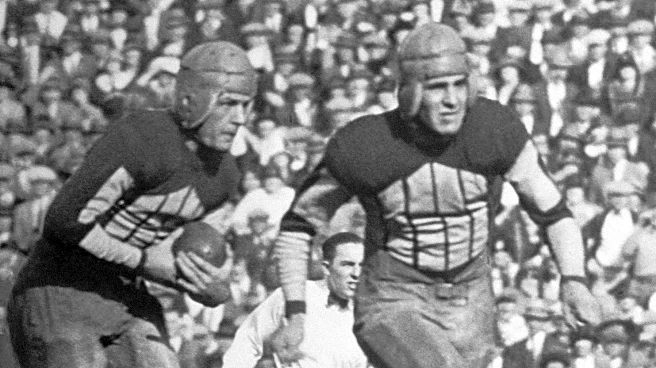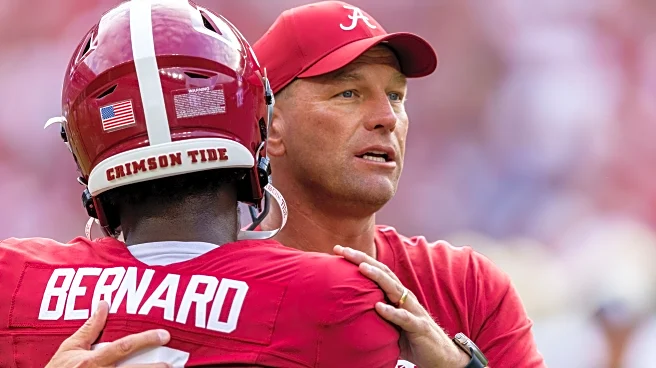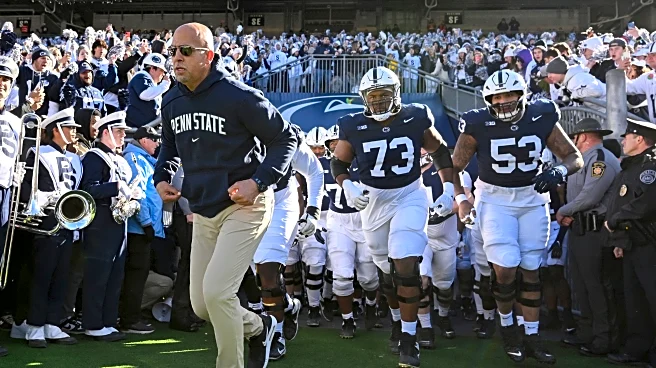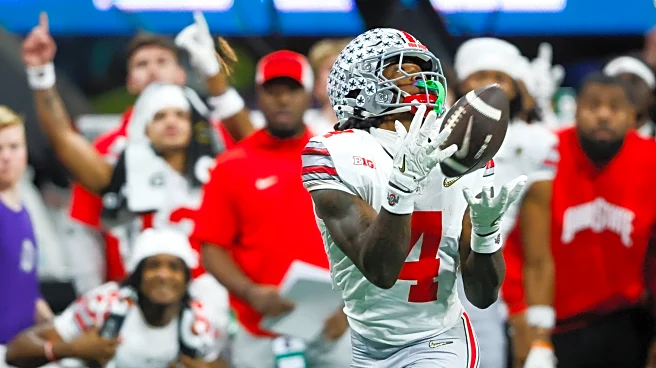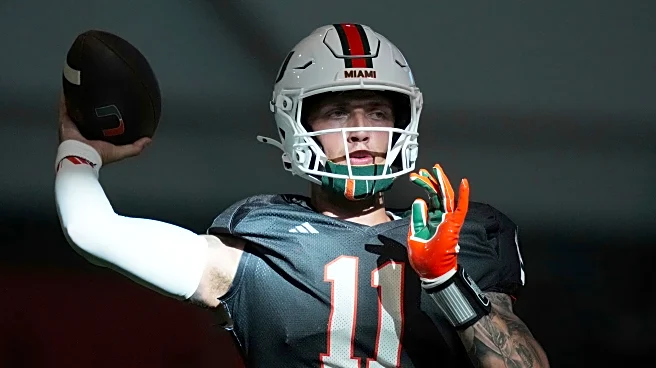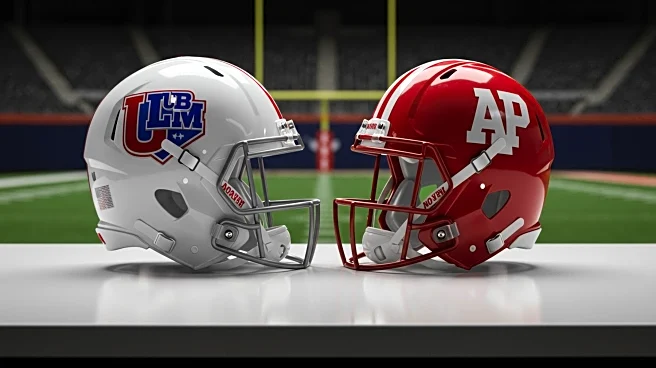What's Happening?
The Associated Press is marking 100 years of its annual All-America team, a prestigious honor in college football. Since its inception in 1925, nearly 2,000 players have been recognized, including notable figures like Red Grange and Travis Hunter. Notre Dame leads with 85 first-team selections, followed by Alabama, Ohio State, Southern California, and Oklahoma. The Southeastern Conference boasts the most first-team picks, with 340. The tradition began with Walter Camp, known as the 'Father of Football,' who first named an All-America team in 1889. The AP's selection process has evolved over the years, now involving media members who vote in the AP Top 25 poll.
Why It's Important?
The AP All-America team has played a significant role in promoting college football and shaping its history. It has introduced football stars to regions with limited exposure to the sport, driving its growth. The honor is highly regarded, often considered the 'gold standard' among various All-America recognitions. It has contributed to the national conversation around college football, influencing perceptions of player excellence and team performance. The AP's consistent recognition over the years has helped maintain the tradition's prestige and relevance in the evolving media landscape.
What's Next?
The AP All-America team will continue to be a key part of college football's narrative, with selections sparking debates and discussions among fans and analysts. As the media landscape changes, the AP's role in college football coverage may adapt, but the All-America team is expected to retain its significance. Future selections will likely continue to highlight emerging talent and contribute to the sport's historical record.
Beyond the Headlines
The AP All-America team's impact extends beyond sports, reflecting cultural shifts and the evolving nature of media coverage. It highlights the importance of recognition in sports and its influence on player careers and public perception. The tradition underscores the role of media in shaping sports narratives and fostering national interest in college football.


